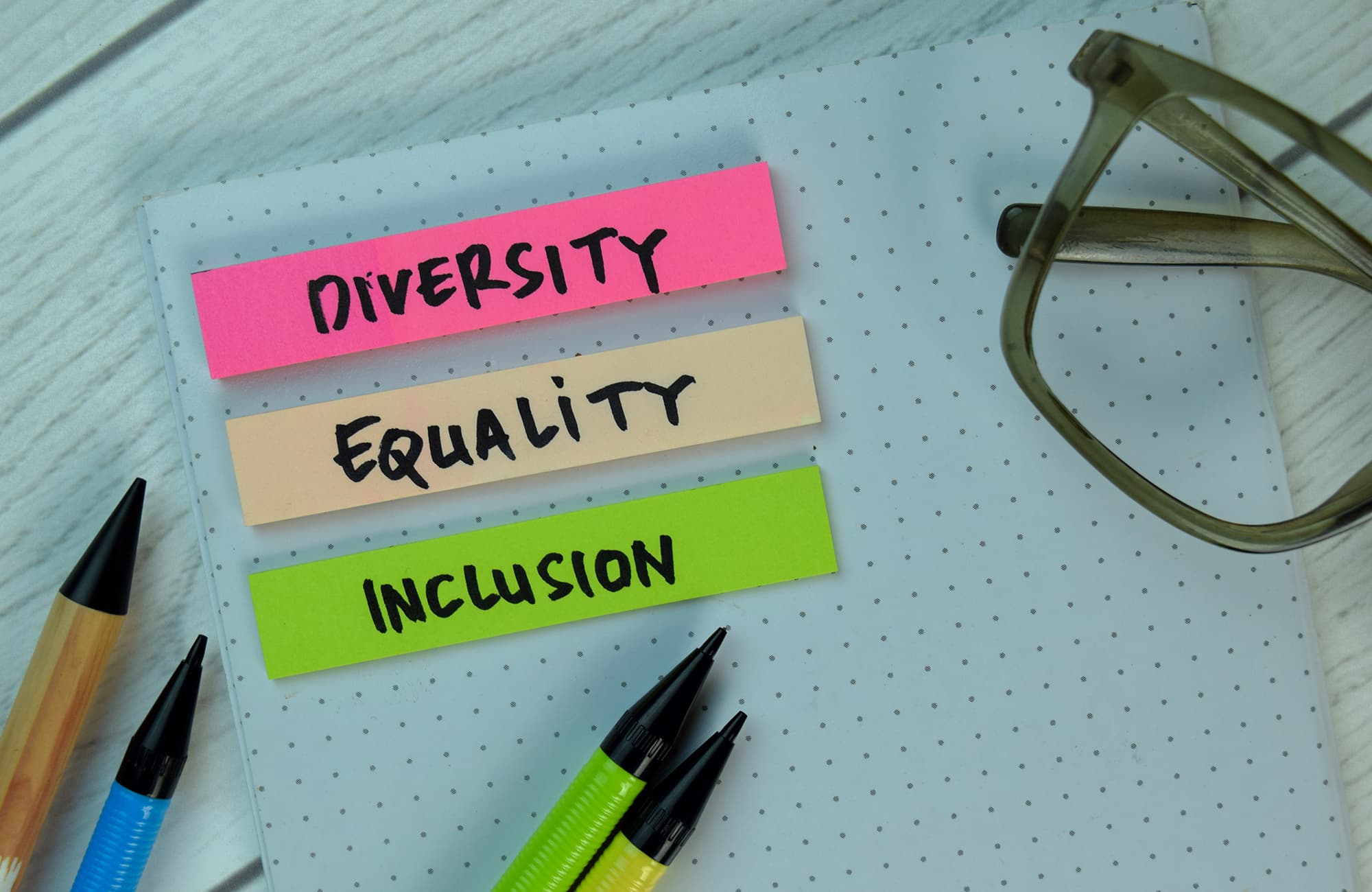Accelerating gender diversity in Australian workplaces

Helen Kurincic is the Chair of two ASX listed companies, Integral Diagnostics and McMillan Shakespeare. She also holds three other board positions and has a distinguished executive career encompassing many aspects of the healthcare sector.
She contributes healthcare sector expertise to IFM in her capacity as a member of our Private Equity team’s Executive Network Panel where no conflicts of interest exist.
Helen spoke to us about her career in healthcare, best practices in healthcare governance and the changes that are needed to accelerate Australia’s progression towards more gender diverse and inclusive workplaces.
Question: What has been your career in healthcare to date?
Answer:
My early life started off in nursing. I always wanted to work in healthcare and I needed to leave home and be financially independent, so nursing suited me well. In those days, you did your training in a hospital and were paid as well. I thought this was a great way to learn about what everyone did in a hospital from the ground up, and then decide whether or not I wanted to go back to university and study.
I really enjoyed nursing and ended up specialising in critical care. I then went on to do roles where I thought a lot about healthcare outside of the four walls of the hospital. I worked hard and I had the privilege of being asked to do various roles that gave me more management and leadership experience. I also did an MBA and focused on accounting and finance.
My last executive role was as Chief Operating Officer (COO) and Director of Genesis Care for seven years, from its earliest inception to significant growth, improving access and the quality of radiation oncology and cardiology nationally. I have often held concurrent executive and board roles throughout my career that began in my 20’s as I thought the board experience would enable me to learn more and make me a better executive. I am now the Chair of two listed Australian companies - Integral Diagnostics and McMillan Shakespeare - and hold three other board level roles at Estia Health (NED & Chair risk committee), HBF Health (NED and Chair risk committee) and Victorian Clinical Genetic Services (probono).
Question: Why healthcare?
Answer:
I’ve actually been fascinated by healthcare all my life. As a kid, I used to ride the tram to the city and it went past all the hospitals. I used to look at them and think:
“Those are the most important places in the world because they deal with life and death every day.” As I got older, I started to feel that there is nothing more valuable than your health and your life. And there really is no greater accountability and responsibility than someone’s life. To me, this was part of the epitome of ‘making a difference’ and that’s what really attracted me to the healthcare sector.
Question: What is the current profile of gender diversity within healthcare?
Answer:
Healthcare is inherently a customer-centric sector of the economy – it’s all about the people who need our care. Given the diversity of people who use healthcare services, one would think that the sector itself would also be very diverse, but this is not really the case.
Women make around 80 percent of the purchase and usage decisions related to healthcare1 . They are responsible for their own healthcare decisions, but they also make the majority of the decisions related to their children and ageing parents. Sometimes they even make healthcare decisions for their partners. Women also comprise around 75 percent of the workforce in Healthcare2 , so on these two measures, it appears very female dominated.
But if you look deeper, healthcare is no different to any other industry – the funnel still applies! There is a huge decrease in the representation of women as we move higher up healthcare organisations, especially in senior management and board level roles.
Across Australia’s listed companies (ASX200), only 12 percent of line management and operational management roles are held by women and in healthcare this was a mere 5 percent in 2020, down from 15 percent in 20173 . When you consider that around 76 percent of CEO appointments draw from line management and operational roles and a further 20 percent from CFO roles, the outlook for women in senior management remains quite bleak, even in healthcare3.
I am cognisant that as a female, I’m actually in a rare position, chairing two publicly listed companies. In the last two years, 50 new CEOs were appointed by ASX200 companies and only three of them were women, causing the proportion of women CEOs in Australia to fall to only 5 percent3 . So we still have a long way to go with gender diversity across businesses in general.
Question: What do you see as the benefits of gender diversity to business and the broader economy?
Answer:
The benefits of gender diversity are well documented and hopefully well understood by decision makers across the business community. They include higher business performance, better decision making, more diversity of thought, increased productivity and stronger economic growth, to name a few. Top quartile companies for gender diversity on their executive teams were 21 percent more likely to experience above average profitability4. If the labour force participation gap between men and women was halved, Australia’s annual GDP would increase by $60b and cumulative living standards would rise by $140b in 20 years5.
You can sum it up really well with a great quote from the UN Secretary General:
“You can’t realise 100 percent of your goals if 50 percent of the population can’t realise their full potential6.”
Question: How do you think we can move towards gender equality in business?
Answer:
At the current rate of change, it will likely take about 100 years to achieve true gender equality, so the idea that it will simply ‘get better over time’ is outdated. Nothing is going to happen without a concerted effort to speed the pace of change in Australia and globally.
Over the past few years it has become clear that a shift in attitudes is more likely to occur when we focus more intensely on the problem. For example, the announcement of changes to government standards covering diversity, the publication of gender diversity statistics by companies and the setting of gender diversity targets are all ‘shining a spotlight’ on the issue of gender diversity and increasing public pressure for meaningful change at the corporate level.
However, the pressure to change is spread unevenly across the economy.
Transparency and reporting requirements are accelerating the pace of change amongst some listed companies, where pressure can come from scrutiny by investment analysts, publicly available information on gender diversity and wellorganised shareholder activism.
By contrast, smaller companies and those that are privately owned face less pressure as the public simply has less visibility over their operations. For example, amongst small healthcare companies (less than $100m market capitalisation), only 9 percent of board roles are currently held by women7.
This suggests we need to further encourage companies to set clear gender equality objectives, and possibly implement measures such as gender diversity targets and quotas to help align interests across the broader economy.
There is also a role for governments, both State and Federal, to better promote gender equality. This includes role modelling gender equality in Parliament and other government workplaces, promoting clear objectives and expectations around gender issues and having the appropriate policies in place to promote gender equality across the broader economy and facilitate the structural changes required to make it a reality.
Question: What are the ‘structural changes’ that you believe are required?
Answer:
The main areas that I believe require structural change are the economics of child support as well as social changes that support women from a domestic perspective. Studies by the Australian Institute of Families8 show that on average, women do twice the amount of child care and housework as their partners, regardless of their paid work situation. The University College London research showed this same pattern during COVID-19 lockdown. So we need a shift in attitudes at home, as well as at work, to really achieve gender equality.
In the prevailing post-COVID-19 environment, this is even more critical. The ability to work from home on a regular basis is a significant social change that emerged from the pandemic. These hybrid work models are particularly attractive to women because they make it easier to juggle work and care/domestic roles, but it will be a major setback for gender equality if women end up being the only ones to utilise this new workplace flexibility.
To prevent this from happening, we need to promote the positive aspects for both men and women so that men embrace workplace flexibility too, particularly in management and operational roles. This should assist with the ‘normalisation’ of hybrid work models across the workforce and help ensure that they do not become a new barrier to gender equality in business.
Question: What are the main governance challenges to achieving gender equality?
Answer:
From a governance perspective, it is important that companies lead from the top down as well as push to create a pipeline and pathway from the bottom up. Companies with male dominated boards are not demonstrating gender equality, hence they are unlikely to ever achieve equality across their workplaces.
I believe gender equality needs to begin at the board and executive level and filter throughout every level of an organisation. By setting clear objectives and goals, and regularly measuring progress with accurate and transparent metrics, boards can set the agenda for change and make real progress towards equality over coming years.
Boards also need to be responsible for ensuring that the post-COVID-19 flexible and hybrid working arrangements, mentioned earlier, receive equal participation from men and women. We have the opportunity of a lifetime to improve the career prospects of women if men also work flexibly, as this is a pathway to a more even distribution of the domestic workload. If men can juggle more, women can juggle a little less, and their careers can reap the benefits!
1 Women in Healthcare Leadership Report 2019, Oliver Wyman
2 Australian Government Australian Institute of Health & Welfare, Health Workforce Snapshot released 23 July 2020
3 CEW ASX200 Senior Executive Census 2020
4 McKinsey & Company 2018, Delivering Through Diversity, 17 September 2018
5 Australian Government WGEA, Workplace gender equality: the business case, 12 November 2018
6 Source United Nations Press Release ‘Secretary-General says, in message for International Women’s Day, ‘Unleash the Power of Women to Secure a Brighter Future for All, 3 March 2015
7 Wexford Hayes, Improving the Diversity of Biotechnology Boards in Australia, Lee Rochester, 2021
8 Sydney Morning Herald, Housework twice the burden for women, Rachel Browne, 17 May 2013 & Daily Mail UK, Women did nearly twice the amount of housework and childcare as men during the first Covid-19 lockdown, survey reveals, Jonathon Chadwick, 11 March 2021
Meet the author
Related articles

Infrastructure Horizons 2025: How emerging trends in infrastructure will change the world

Investing in Australia: Accelerating industry super investment and growing Australia’s housing supply
